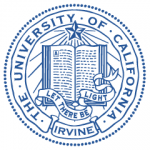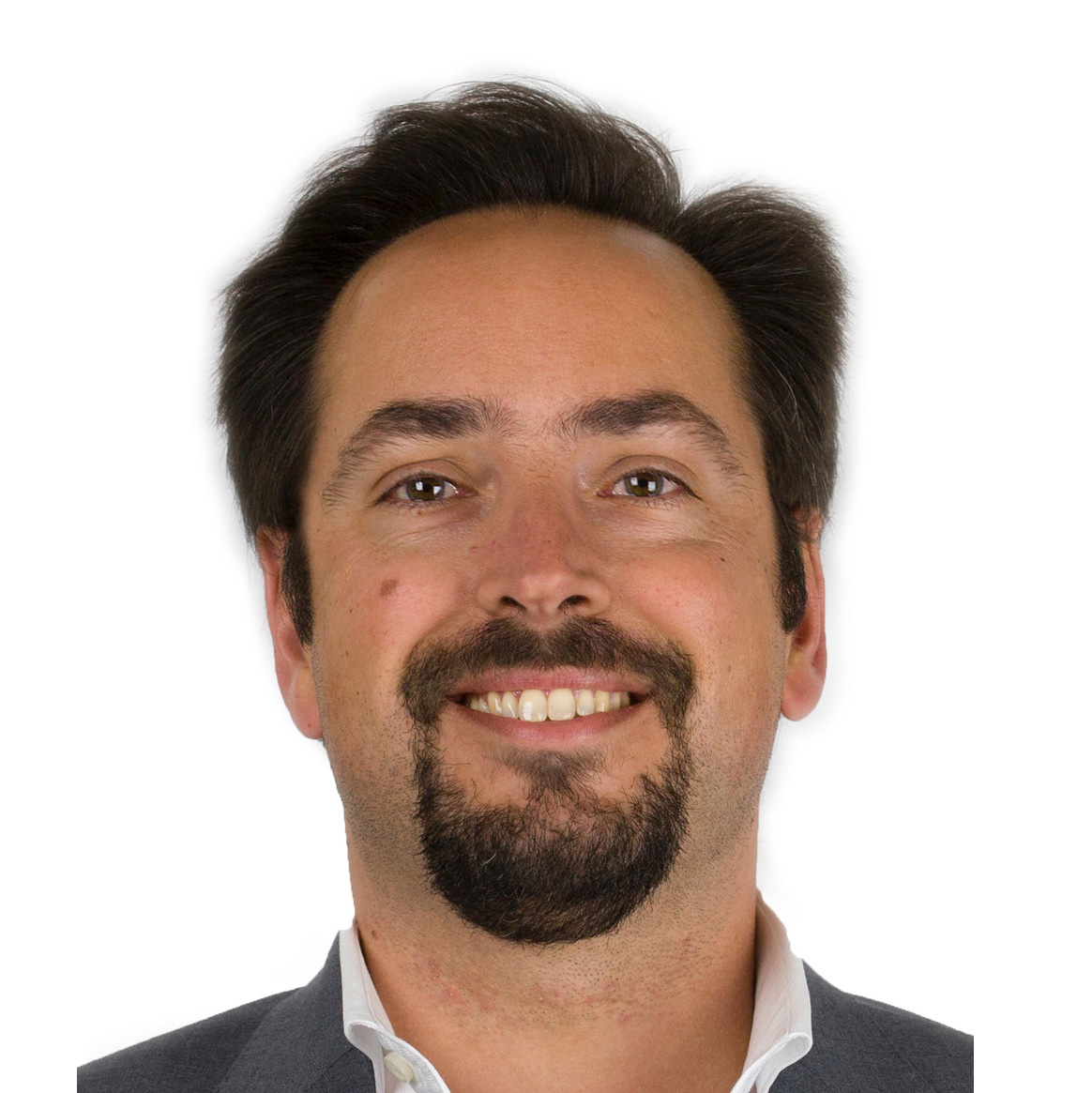Our research group works in the general area of mechanics of materials, developing analytical, numerical and experimental techniques across multiple length scales. Our primary research goal is the optimal design, fabrication and experimental characterization of micro-architected materials with superior combination of properties. Scroll to the bottom of the page to meet our group members, and learn about current and past projects.
Research
Interests
- Mechanical Metamaterials
- Additive Manufacturing
- Scalable Nanomanufacturing
- Mechanical Modeling
- Topology Optimization
Funding
Thanks to the following agencies for supporting our research!
National Science Foundation (NSF), National Aeronautics and Space Administration (NASA), Army Research Laboratory (ARL), Air Force Office of Scientific Research (AFOSR), Defense Advanced Research Projects Agency (DARPA), Office of Naval Research (ONR), BIAM-UCI Center for the Fundamental Study of Novel Structural Materials.
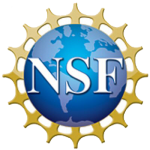

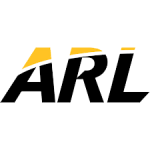
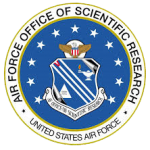
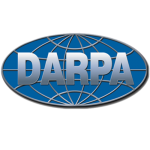

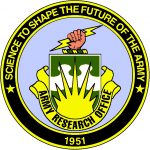
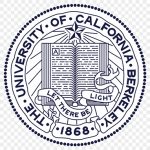
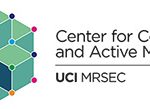

Research Team
The Architected Materials Lab is a cohesive group of post-doctoral scholars, PhD students, MS students, undergraduate students, and occasional visitors who work together towards the development of novel metamaterials. Most of us like to combine analytical, numerical and experimental techniques to solve engineering problems.
Post Doctoral Researchers
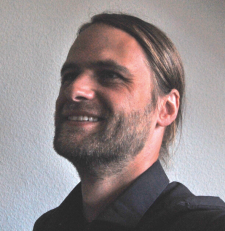
Alex Groetsch
Post-doctoral Scholar
Office: 1001 Engineering TowerEmail: alexander.groetsch@uci.edu
Postdoc/Fellow, EMPA, Swiss Federal Laboratories for Materials Science and Technology, Thun, Switzerland
PhD, Heriot-Watt University, Edinburgh, UK
MS, Technical University of Kaiserslautern, Germany
BS, University of Cologne, Germany
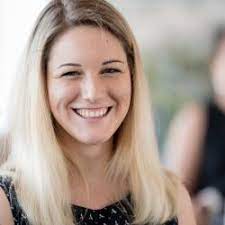
Julia Puerstl
Postdoctoral Scholar
Office: 1001 Engineering TowerEmail: jpuerstl@uci.edu
PhD, University of Cambridge, UK
MS, Technische Universität Wien, Austria
Graduate Students
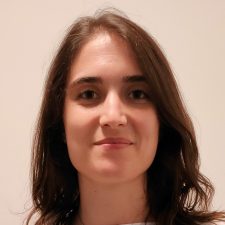
Kate Ainger
PhD student in Materials Science and Engineering
Office: 1001 Engineering TowerEmail: kainger@uci.edu
BS, University of Trieste, Italy (2018)
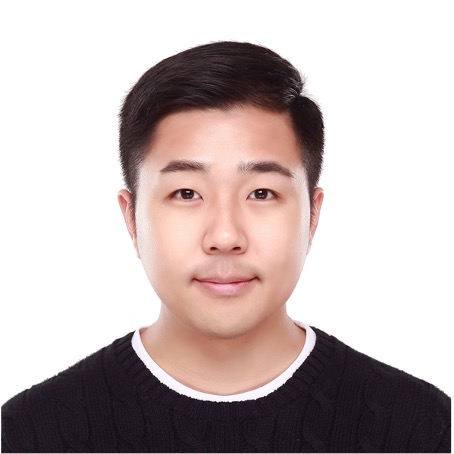
Jungyun Lim
PhD student in Mechanical and Aerospace Engineering
Office: 1001 Engineering TowerEmail: jungyul@uci.edu
BS, Bucknell University (2015)

Isabella Chu
PhD student in Materials Science and Engineering
Office: 1001 Engineering TowerEmail: ypchu@uci.edu
BS, CalPoly Pomona (2021)
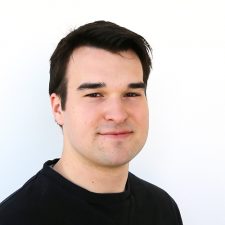
Cameron Crook
PhD student in Materials Science and Engineering
Currently at Lawrence Livermore National LaboratoryEmail: ccrook@uci.edu
BS, Worchester Polytechnic Institute (WPI) 2017
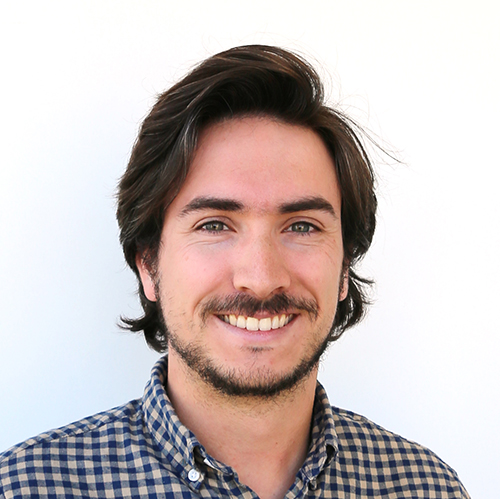
Raphael Thiraux
PhD student in Materials Science and Engineering
Office: 1001 Engineering TowerEmail: rthiraux@uci.edu
MS, Phelma INP, Grenoble, France 2013
BS, Phelma INP, Grenoble, France 2010
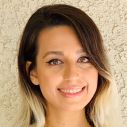
Mahsa Amiri
PhD student, Materials and Manufacturing Technologies
Office: 1001 Engineering TowerEmail: mamiri@uci.edu
MS, South Dakota School of Mines and Technology, 2017
MS, Sharif University of Technology, Tehran, Iran, 2012
BS, Shahid Chamran University, Ahwaz, Iran, 2010

Brandon Fields
PhD student in Materials Science and Engineering
Office: 1001 Engineering TowerEmail: bfields1@uci.edu
BS, California Polytechnic State University, San Luis Obispo, 2019
Group Alumni
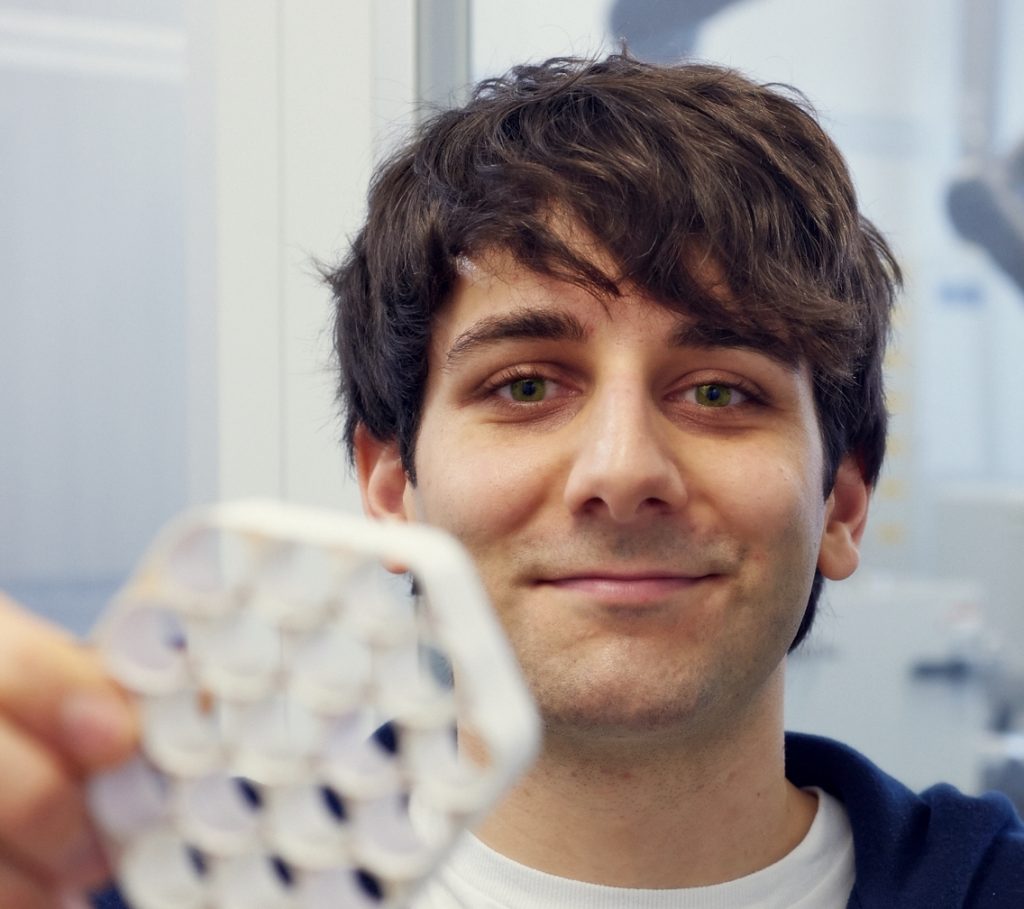
Jens Bauer
Currently Assistant Professor, Karlsruhe Institute of Technology, Germany
Research Scientist, University of California, IrvinePhD, Karlsruhe Institute of Technology, Germany
MS, Karlsruhe Institute of Technology, Germany
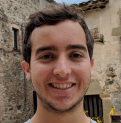
Marti Sala Casanovas
MS, University of California IrvineBS, Polytechnic University of Catalonia, Barcellona, Spain 2018
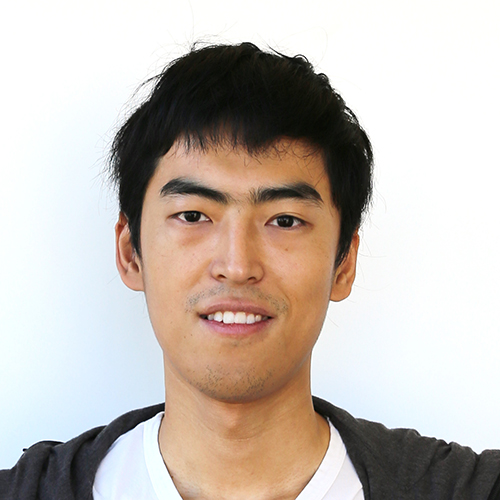
Yunfei Zhang
Currently at Amazon 123 Labs
PhD, University of California, Irvine 2021MS, University of California, Irvine 2015
BS, Zhengzhou University, China 2013
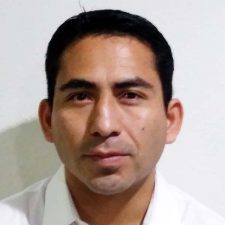
Leo Salgado
Currently Ph.D. student in MAE at UCI
M.S. in Mechanical and Aerospace Engineering, 2020BS, University of California, Irvine, 2018
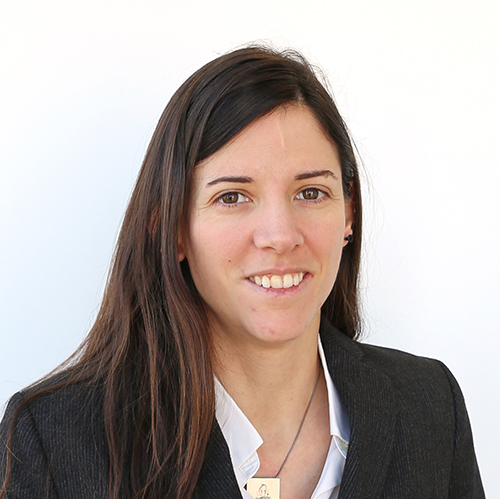
Anna Guell
Currently at Lawrence Livermore National Laboratory
PhD, University of California, Irvine 2020MS, University of California, Irvine 2015
BS, Polytechnic University of Catalonia, Barcellona, Spain 2013
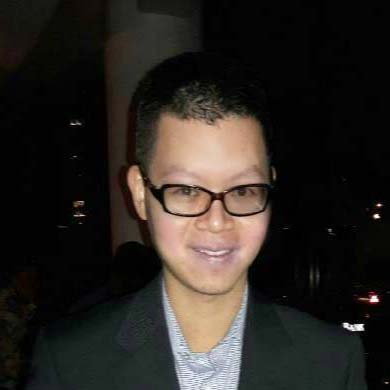
Meng-Ting Hsieh
Currently postdoctoral scholar at the University of California, Los Angeles
PhD, University of California, Irvine 2020MS, Oklahoma State University 2014
BS, Wichita State University 2012
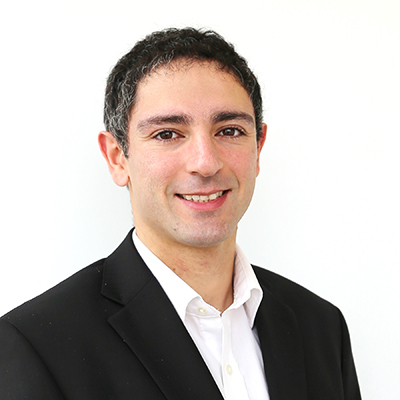
Babak Haghpanah
Currently at Byton, Santa Clara, CA
Postdoctoral scholar in Mechanical and Aerospace Engineering, 2014-2018
Noemi Bonessio
Researcher
Project Scientist in Mechanical and Aerospace Engineering, 2015-2017
Nicolas Ruvalcaba
Currently at Raytheon
MS in Mechanical and Aerospace Engineering, 2016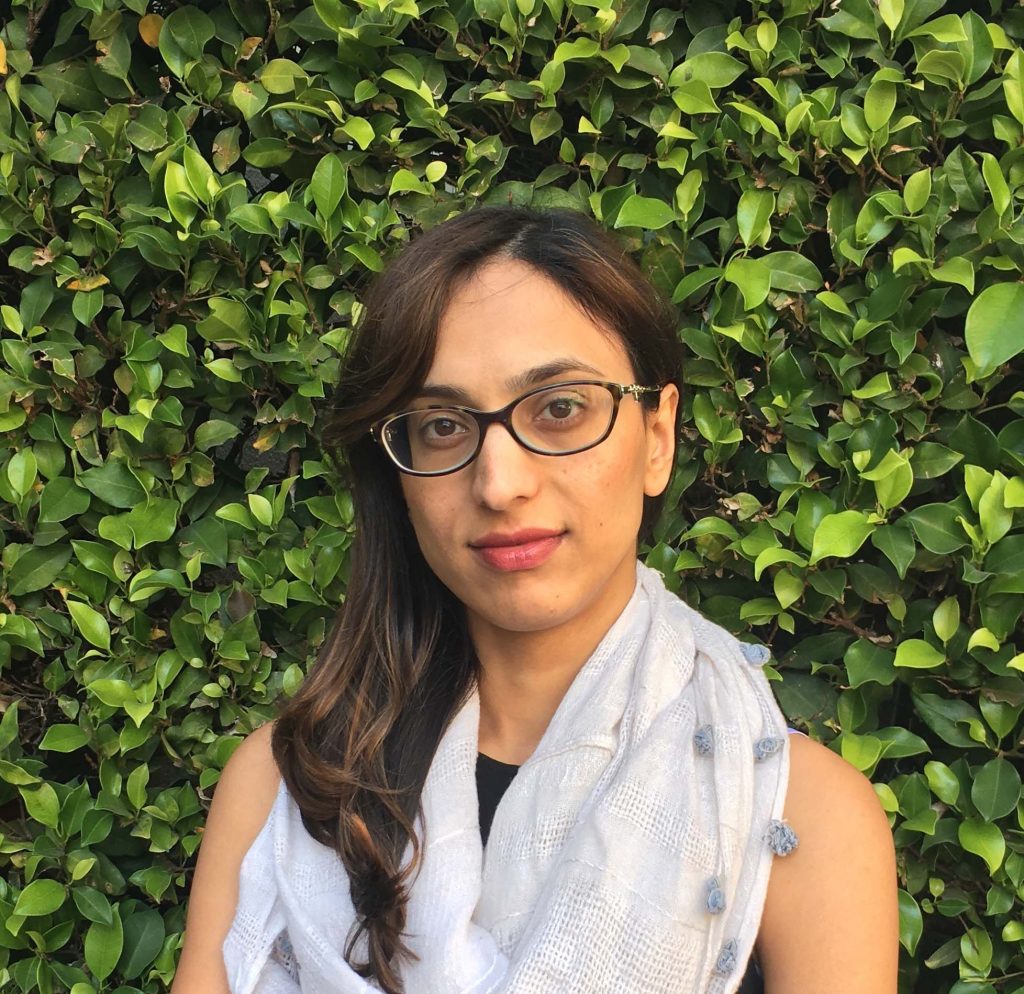
Ladan Salari-Sharif
Currently at Adidas Futurecraft, Portland, OR
PhD in Mechanical and Aerospace Engineering, 2016Postdoc in Mechanical and Aerospace Engineering, 2016-2018
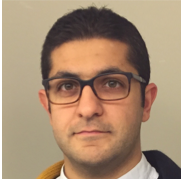
Peyman Pourrajab
Currently at Rockwell Collins in Irvine, CA
MS in Mechanical and Aerospace Engineering, 2017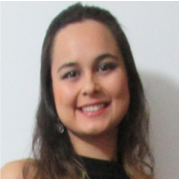
Bianca Endo
MS in Mechanical and Aerospace Engineering, 2017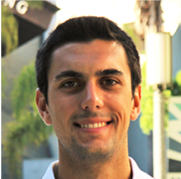
Oriol Martinez
Currently Process Engineer at Zanini Auto Group, Barcelona, Spain
MS in Mechanical and Aerospace Engineering, 2016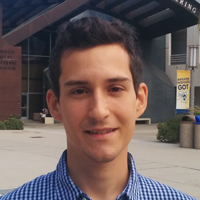
Marc Soriano
Currently Project Engineer at Bal Seal Engineering, Inc. in Foothill Ranch, CA
MS in Mechanical and Aerospace Engineering, 2015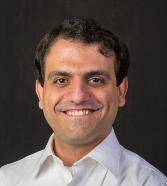
Alireza Asadpoure
Currently Assistant Professor, University of Massachusetts, Dartmouth
Postdoc in Mechanical and Aerospace Engineering, 2012-2015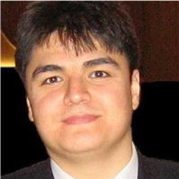
Kivanc Azgin
Currently Assistant Professor, Middle East Technical University, Ankara, Turkey
PhD in Mechanical and Aerospace Engineering, 2012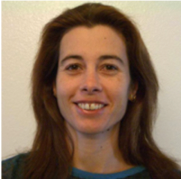
Anna Torrents
Currently at Bal Seal Engineering, Inc. in Foothill Ranch, CA
PhD in Materials and Manufacturing Technologies, 2011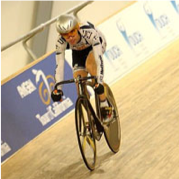
Scott W. Godfrey
Currently at Google, Inc. in Mountain View, CA
MS in Mechanical and Aerospace Engineering, 2010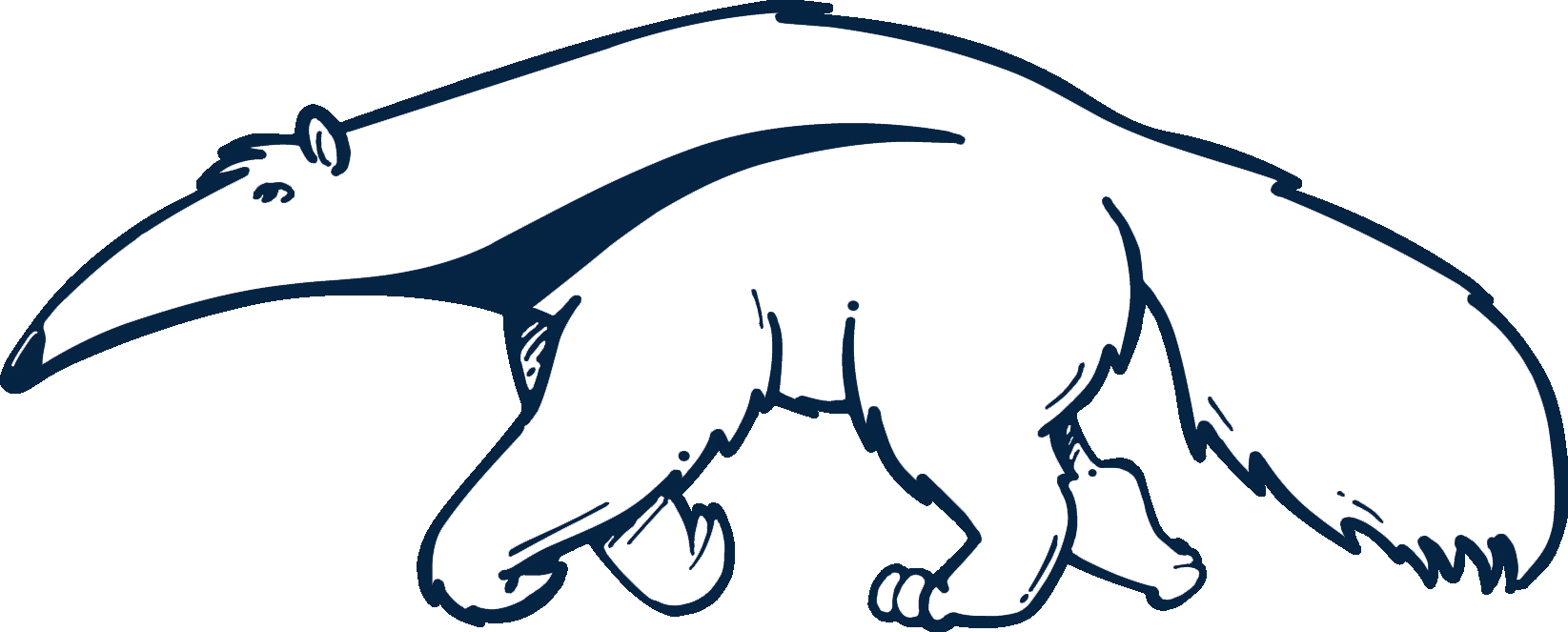
Eva Carreira
Currently Consultant, ipCapital Group, Burlington, VT
MS in Materials Science and Engineering, 2009Current Research Projects
-
Agency: Army Research Office
Dates: 08/01/2022 – 07/31/2027
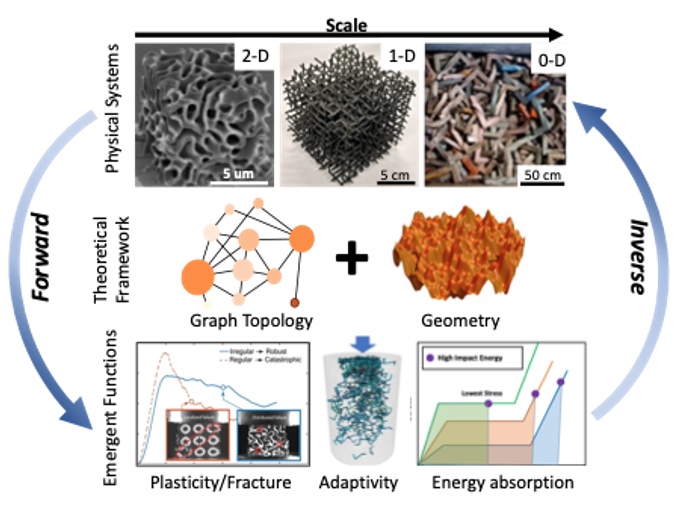 The goal of this project is to advance the performance of DoD systems beyond the limits imposed by existing materials, leveraging the design power granted by a new analytical network framework that incorporates topological and geometrical descriptors of materials. Our objective is to design and demonstrate emergent functions in mechanical metamaterials exploiting intentional structural disorder. Functionalities will include inelastic responses, like plasticity and fracture, adaptivity, and programmable and tunable energy dissipation. These goals will be made attainable by developing a general framework that defines and quantifies classes of structural disorder, applicable to different structures using common sets of parameters. We envision a research program centered around: 1) developing network theory approaches that combine topology and geometry; and 2) designing metamaterials with emerging functions and experimentally validating them. The physical systems proposed span a wide range of length scales, from nanometers to meters, and dynamical loading scales, from quasi-static to ballistic. We select three model systems to explore different aspects of disorder: shell-based metamaterials, truss lattices, and granular systems. All of these materials can be represented by an irregular network topology, but they differ dramatically in the underlying local contact geometry: some networks represent the point contacts between particles (0-Dimensional), others trusses in a lattice metamaterial (1-D), and others shells (2-D).
The goal of this project is to advance the performance of DoD systems beyond the limits imposed by existing materials, leveraging the design power granted by a new analytical network framework that incorporates topological and geometrical descriptors of materials. Our objective is to design and demonstrate emergent functions in mechanical metamaterials exploiting intentional structural disorder. Functionalities will include inelastic responses, like plasticity and fracture, adaptivity, and programmable and tunable energy dissipation. These goals will be made attainable by developing a general framework that defines and quantifies classes of structural disorder, applicable to different structures using common sets of parameters. We envision a research program centered around: 1) developing network theory approaches that combine topology and geometry; and 2) designing metamaterials with emerging functions and experimentally validating them. The physical systems proposed span a wide range of length scales, from nanometers to meters, and dynamical loading scales, from quasi-static to ballistic. We select three model systems to explore different aspects of disorder: shell-based metamaterials, truss lattices, and granular systems. All of these materials can be represented by an irregular network topology, but they differ dramatically in the underlying local contact geometry: some networks represent the point contacts between particles (0-Dimensional), others trusses in a lattice metamaterial (1-D), and others shells (2-D).Lab members: Kate Ainger, Alex Groetsch
-
Agency: University of California Office of the President
Dates: 06/01/2022 – 05/31/2025
Research Team:
- Alicia Kim, PI (UCSD)
- Nick Boechler (UCSD)
- Lorenzo Valdevit (UCI)
- Ramin Bostanabad (UCI)
- Penghui Cao (UCI)
- Matthew Begley (UCSB)
- Dan Gianola (UCSB)
- Chris Spadaccini (LLNL)
- Saryu Fensin (LANL)
- Abigail Hunter (LANL)
Website: http://dreams.ucsd.edu
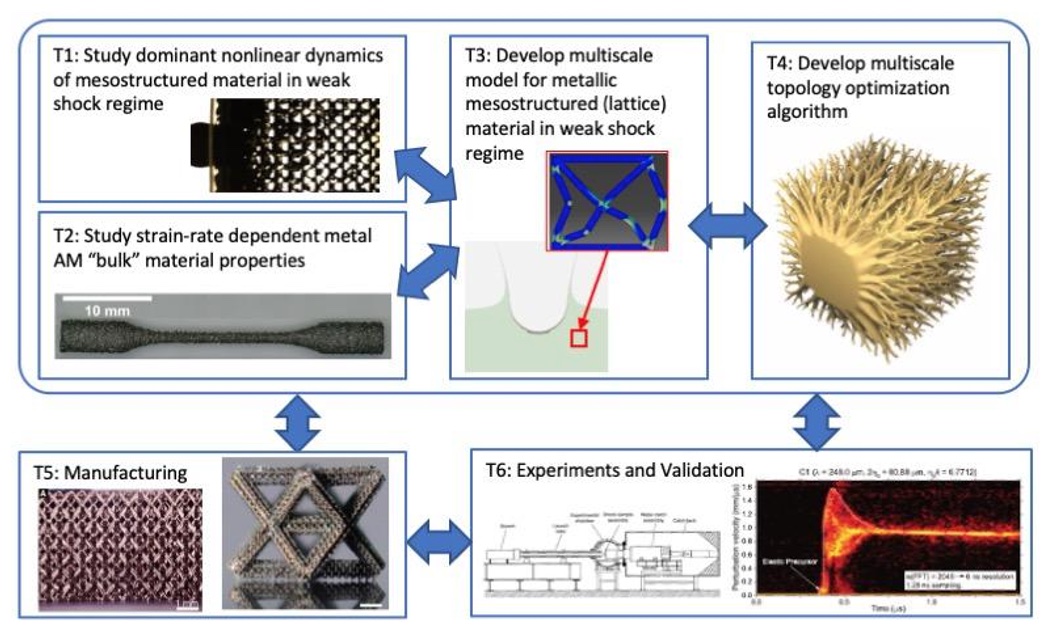 The Center for DREAMS is dedicated to the development of innovative frameworks to develop high performance materials and structures. An inclusive, highly collaborative and creative environment forms the core of our DREAMS, one that fuels the integration of advanced simulation tools, novel materials processing routes, and multi-physics optimization. Our DREAMS will lead to new solutions to modulate dynamic material-environment interactions and ultimately improve shock mitigation, impact damage and human-machine interfaces.
The Center for DREAMS is dedicated to the development of innovative frameworks to develop high performance materials and structures. An inclusive, highly collaborative and creative environment forms the core of our DREAMS, one that fuels the integration of advanced simulation tools, novel materials processing routes, and multi-physics optimization. Our DREAMS will lead to new solutions to modulate dynamic material-environment interactions and ultimately improve shock mitigation, impact damage and human-machine interfaces.Lab members: Mahsa Amiri, Julia Puerstl
-
Agency: Office of Naval Research
Dates: 06/2021 – 05/2024

We aim to develop the scientific understanding that will enable optimal design and scalable additive manufacturing of a novel class of superior architected materials – functionally graded metallic shell-metamaterials, produced by Laser Powder Bed Fusion (LPBF) from 17-4 PH steel. Deliverables include (i) a computational strategy for optimal design of LPBF-fabricated functionally graded shell-metamaterials that are far superior to traditional truss-based lattices, and (ii) a fabrication approach that allows local control of plastic deformation mechanisms in 17-4 PH steel thin-wall structures. While LPBF is an ideal technique for fabrication of lattice materials for critical structural applications, existing lattice designs have not taken advantage of two unique benefits of this additive manufacturing process: (i) the ability to fabricate almost arbitrarily complex topologies and (ii) the opportunity to locally tailor the mechanical properties of the constituent material. The overarching goal of the proposed research project is to develop the scientific understanding in metallurgy, mechanics and topology optimization that is required to realize these advances and develop physically heterogeneous shell-metamaterials with unprecedented combinations of properties.Lab members: Brandon Fields, Julia Puerstl
-
Agency: Army Research Laboratory (via Worcester Polytechnic Institute)
Dates: 08/2017 – 09/2023
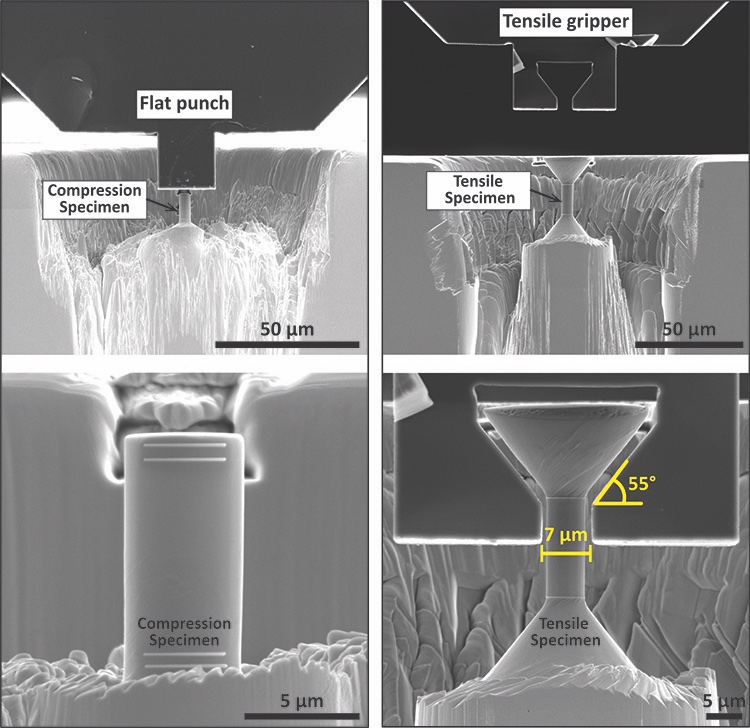 This project aims at furthering the development of cold spray as an emerging additive manufacturing technology. Cold spray offers unique advantages over competing technologies, most importantly the ability to manufacture thick deposits at very high speed, and without melting the feedstock powder. Yet the complex relationships among feedstock characteristics, processing parameters, microstructural development and mechanical properties of the deposit are far from understood. In this project, we focus on unveiling these relationships via a combination of advanced microstructural characterization, micro-mechanical testing and numerical modeling.
This project aims at furthering the development of cold spray as an emerging additive manufacturing technology. Cold spray offers unique advantages over competing technologies, most importantly the ability to manufacture thick deposits at very high speed, and without melting the feedstock powder. Yet the complex relationships among feedstock characteristics, processing parameters, microstructural development and mechanical properties of the deposit are far from understood. In this project, we focus on unveiling these relationships via a combination of advanced microstructural characterization, micro-mechanical testing and numerical modeling.In particular, we:
- Investigate the effects of humidity and temperature on the evolution of the passivation layer in high purity aluminum and Al6061 cold spray powders and correlate them to corresponding changes in critical adhesion velocity and microstructure / properties / performance of sprayed deposits. We developed custom experimental infrastructure, including a fluidized bed and an isolation chamber and mass spectrometer for atomization to handle and treat powders in low oxygen conditions; and we performed extensive DFT and MD calculations of elastic constant of crystalline and amorphous alumina polymorphs.
- Investigate the role of powder composition, microstructure and morphology on the microstructure, morphology and mechanical properties of cold sprayed refractory alloys.
Lab members: Cameron Crook, Mahsa Amiri
-
Agency: National Science Foundation
Dates: 06/01/2019 – 05/31/2023
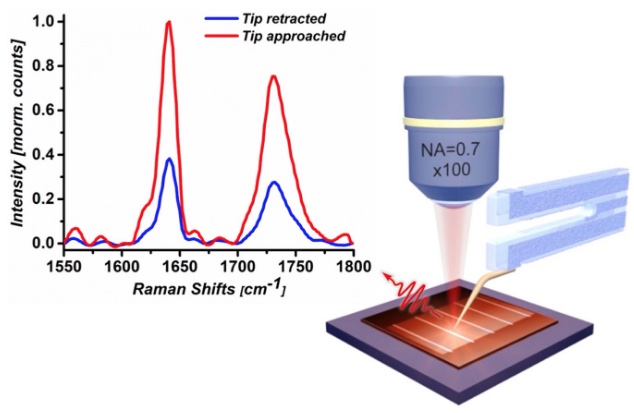 Two-photon polymerization (TPP) is a popular technology for the fabrication of microstructures, yet the photo-physics and photo-chemistry of the process are poorly understood. In this program, we unravel several longstanding and prevalent questions in the TPP community regarding the polymerization process at the nanoscale using ultrafast optical spectroscopy and tip-enhanced Raman scattering. This program will produce the insights needed to direct the development of optimized photoinitiators, resins and illumination protocols that are pertinent for translating the TPP process to industrial applications. The insights obtained in this work will enable a directed optimization of key TPP parameters, which will produce guidelines for photoinitiator development, directions for controlling the degree of polymerization, new laser illumination strategies of improving resolution and management of the pyrolysis process at the nanoscale.
Two-photon polymerization (TPP) is a popular technology for the fabrication of microstructures, yet the photo-physics and photo-chemistry of the process are poorly understood. In this program, we unravel several longstanding and prevalent questions in the TPP community regarding the polymerization process at the nanoscale using ultrafast optical spectroscopy and tip-enhanced Raman scattering. This program will produce the insights needed to direct the development of optimized photoinitiators, resins and illumination protocols that are pertinent for translating the TPP process to industrial applications. The insights obtained in this work will enable a directed optimization of key TPP parameters, which will produce guidelines for photoinitiator development, directions for controlling the degree of polymerization, new laser illumination strategies of improving resolution and management of the pyrolysis process at the nanoscale.Lab members: Anna Guell, Jens Bauer
-
Agency: National Science Foundation
Dates: 10/01/2019 – 09/31/2023
The overarching goal of this project is to demonstrate a new thermal metamaterial platform by manufacturing carbon-based nanolattice materials. The project objectives include investigations of processing mechanisms to control size, geometry, and nanostructure of carbon nanolattices via a state-of-the-art two-step additive manufacturing process consisting of two-photon polymerization Direct Laser Writing followed by pyrolysis, and characterization of carbon nanolattice-based thermal metamaterials. The target systems include a robust thermal insulator that enables a unique combination of low thermal conductivity and high mechanical strength, and a thermal rectifier that enables direction-dependent thermal properties.
Lab members: Jens Bauer
Past Research Projects
-
Agency: Office of Naval Research
Dates: 09/01/2017 – 08/31/2020
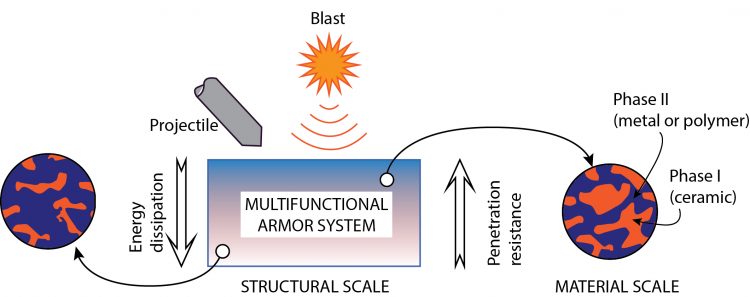
The overarching goal of this program is to develop, fabricate, characterize (both statically and dynamically) and optimize micro/nano‐architected ceramic/metal and ceramic/polymer composites for blast and ballistic protection.
Current armor systems are primarily designed to mitigate two threats: blast and penetration, both possibly occurring over a wide range of intensity and projectile speed and size. A successful armor dissipates the kinetic energy of the blast or projectile via plastic deformation while resisting penetration, all while maintaining the stress level on the protected size within acceptable limits. As no single material exists that can be simultaneously optimized for all these requirements, modern armors are complex multifunctional structures, generally composed of different materials bonded to each other. The need to minimize weight while maintaining appropriate levels of protection is a key driver, in both body and vehicle armor.
A holistic approach to armor design, i.e., an ‘armor as a system’ vision, could potentially result in significant weight saving, by simultaneously optimizing a single functionally‐graded structure to meet all design criteria. Practical implementation of this vision is very challenging, though, requiring careful mixing of two or more materials, with accurate control of the phase topologies, across multiple scales (from the micro/nano‐scale of the phase intertwining to the armor structure scale). This approach is particularly timely, as recent progress in advanced manufacturing has provided new exciting avenues for fabrication of topologically complex multi‐material composites, with two or more phases intimately and precisely intertwined at the micro and nano‐scale.
Here we propose to leverage these novel fabrication opportunities to develop a multifunctional ceramic/metal and ceramic/polymer armor system that is simultaneously optimized for energy absorption and penetration resistance. We will develop novel fabrication approaches for ceramic/metal and ceramic/polymer composites with desired phase topologies; we will characterize our composites microstructurally and mechanically, both under quasi‐static and dynamic conditions, to assess their performance in terms of energy absorption and resistance to penetration; we will use the experimental results to calibrate and validate existing computational models that will allow us to explore a very wide design space; we will combine these models with optimization tools to design the optimal functionally graded multifunctional armor system. As an optional task at the end of the program, we will explore the potential benefit of introducing porosity in the system (in a topologically controlled way) as a way to further tune mechanical properties and density.
Lab members: Anna Guell, Babak Haghpanah, Jens Bauer
-
Agency: AECC BIAM-UCI Research Center for the Fundamental Study of Novel Structural Materials
Dates: 01/01/2018 – 12/31/2020
The focus of this project is to investigate the feasibility of fabricating microlattice materials with Ceramic Matrix Composite struts by Direct Ink Writing (DIW).
Lab members: Raphael Thiraux, Jens Bauer
-
Agency: NASA, Early Stage Innovations (ESI) Program
Dates: 01/15/2018 – 01/14/2021

The overarching goal of this program is to develop and deliver a platform for scalable fabrication and optimal design of ultra-high-performance ceramic and metallic truss core sandwich panels for large-scale (10’s of meters) thermo-structural space applications.
The proposed fabrication approach builds upon two additive manufacturing innovations recently developed by our co-PIs at HRL Laboratories: (i) a novel photopolymerizable pre-ceramic resin that pyrolyzes to SiOC and is compatible with all stereolithography-type processes, and (ii) the self-propagating polymer waveguide (SPPW) fabrication process, which enables roll-to-roll fabrication of micro and macro-lattice cores over large areas. These cores will be post-processed into hollow metallic or solid ceramic truss core lattices and bonded to face sheets.
The key scientific innovation is the integration of models and experiments at multiple scales to elucidate the dependence of mechanical/thermal properties of ceramic and metallic lattices on manufacturing parameters/defects and topology. This scientific understanding will be incorporated in predictive performance models that will be used in optimal design tools. The proposed optimized designs will possess exceptionally high specific stiffness and strength, low thermal conductivity, sufficient toughness for structural applications and can be manufactured in curved and complex shapes. A particular implementation based on this concept would result in a load-bearing structure with debris and micrometeorite shielding performance superior to SOA parasitic D/M shields (e.g., Whipple shields), potentially resulting in dramatic weight savings at the vehicle level.
Lab members: Nicolas Ruvalcaba, Babak Haghpanah, Jens Bauer
-
Agency: Air Force Office of Scientific Research (PI: Andrea Hodge, USC)
Dates: 09/15/2014 – 09/14/2018
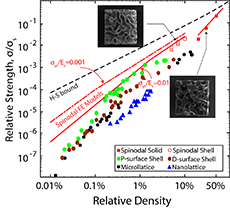
The overall goal of this project is the development of ultra-strong and lightweight cellular materials that combine ordered porosity at the micron and millimeter scales and stochastic porosity at the nanoscale. This concept dramatically speeds up fabrication while providing great combinations of strength and toughness and opening the door to a variety of multifunctional applications. The UCI team is primarily in charge of modeling the mechanical performance of these materials and unveiling the optimal architectures, thus informing the manufacturing process being developed at USC.
One particularly interesting topology that can be self-assembled is the spinodal architecture. Through modeling and experiments, we are unveiling the exceptional mechanical properties of this particular stochastic arrangement of matter, that can provide a unique avenue towards scalable nano-manufacturing.
Lab members: Yunfei Zhang, Meng-Ting Hsieh, Jens Bauer
-
Agency: National Science Foundation
Dates: 08/01/2014 – 07/31/2018
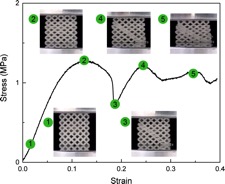
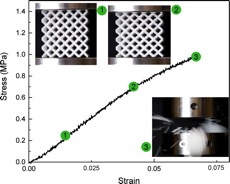
This project, in collaboration with Dr. J. Guest (Johns Hopkins Univ) and Dr. M. Tootkaboni (UMASS Dartmouth), aims at developing and validating a novel topology optimization framework for optimal design of structures and material microarchitectures in the presence of manufacturing defects affecting geometry and materials properties. The UCI role is the investigation and quantification of typical manufacturing defects in micro-architected materials produced with additive manufacturing, and the experimental and numerical characterization of the impact of such defects on the mechanical properties of the microarchitected materials.
Lab members: Bianca Endo, Ladan Salari-Sharif
-
Agency: Office of Naval Research
Dates: 08/01/2014 – 07/31/2017
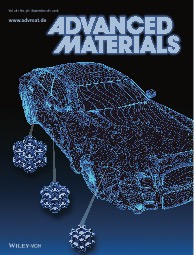

The goal of this project was to explore the potential of architected materials incorporating suitable negative stiffness elements to obtain vibration isolation and impact protection in multifunctional structures. We have introduced and investigated novel 2D and 3D cellular materials with multiple stable states for reconfigurable energy absorption structures, and demonstrated suitable fabrication approaches.
Lab members: Anna Guell, Babak Haghpanah
-
Agency: Office of Naval Research
Dates: 07/25/2011 – 07/04/2014
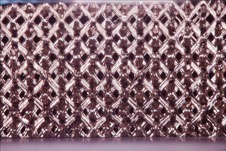
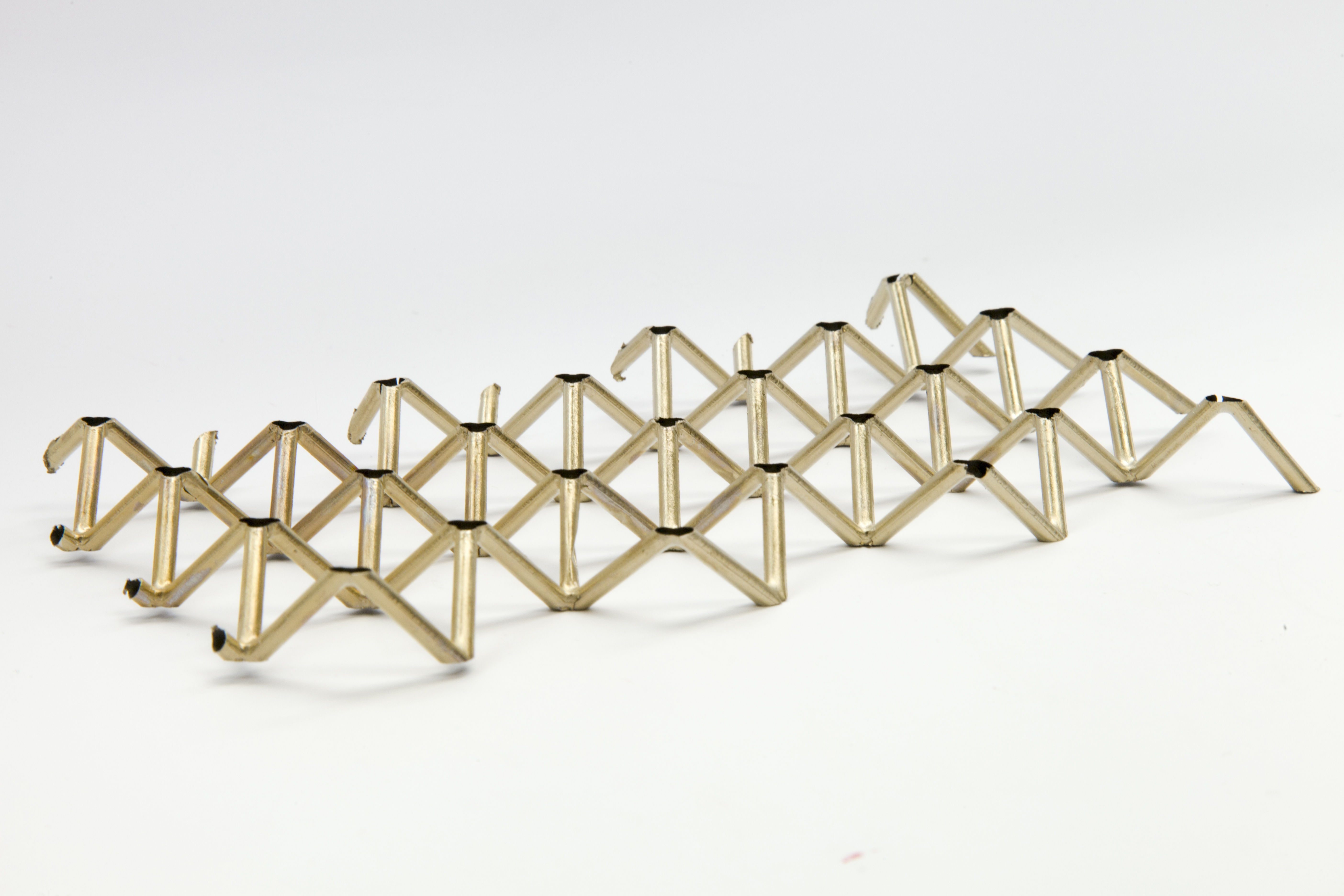
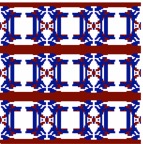
In this project, we investigated the unique damping characteristics of architected materials. In particular, we unveiled the physics behind the unusual structural damping exhibited by ultralight metallic micro-lattice materials and optimized their performance; and we developed novel topology optimization tools for the optimal design of bi-phase cellular materials with unique combinations of low density, high stiffness and high damping under wave propagation.
Lab members: Ladan Salari-Sharif, Alireza Asadpoure
-
Agency: DARPA (PI: William B. Carter, HRL Laboratories)
Dates: 10/01/2010 – 09/30/2014
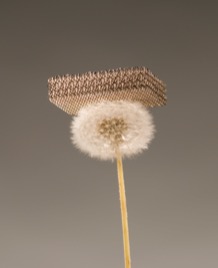
This is the program that started the scientific community of ‘micro-architected materials’. UCI teamed with HRL Laboratories, a private research laboratory based in Malibu, CA, to develop, characterize, model and optimize ultralight hollow metallic microlattices with unprecedented combinations of mechanical properties. In 2011, this research led to the demonstration of the world’s lightest material (at the time) through optimal design of a hollow microlattice, a research accomplishment that was honored with the 2011 Breakthrough Award from Popular Mechanics.
Lab members: Anna Torrents, Scott W. Godfrey, Kivanc Azgin
-
Agency: National Science Foundation
Dates: 05/15/2016 – 10/31/2016
The NSF ICorps program aims at exploring the commercialization opportunities of academic research. In this project, we performed market research on a novel isolator for earthquake protection of residential homes and small commercial buildings. This isolator is based on a novel architected material developed in our lab.
Lab members: Noemi Bonessio
Collaborative Institutes
Researchers in the Architected Materials Group routinely interact with two research institutes: the Institute for Design and Manufacturing Innovation (IDMI) and the UC Irvine Material Research Institute (IMRI).
IDMI is a research institute within the Henry Samueli School of Engineering whose goal is to promote excellence in advanced manufacturing through strategic integration of research, education and community outreach. IDMI maintains a state-of-the-art additive manufacturing facility.
IMRI serves as the cross-campus nexus for materials characterization at UCI. Researchers have access to a wide range of of state-of-the-art, open-access user facilities for the characterization of inorganic, organizers, and biological materials and devices. It offers advanced techniques and services including structural and chemical characterization, 3D imaging, surfaces analysis, physical property measurements, and fabrication of materials and devices by a variety of techniques.
